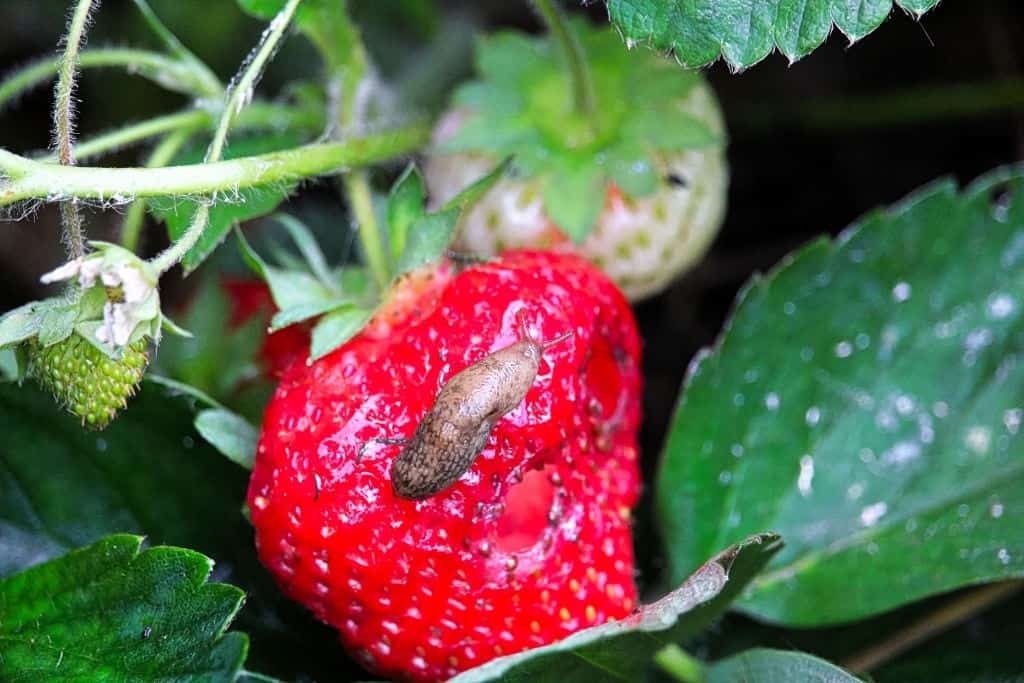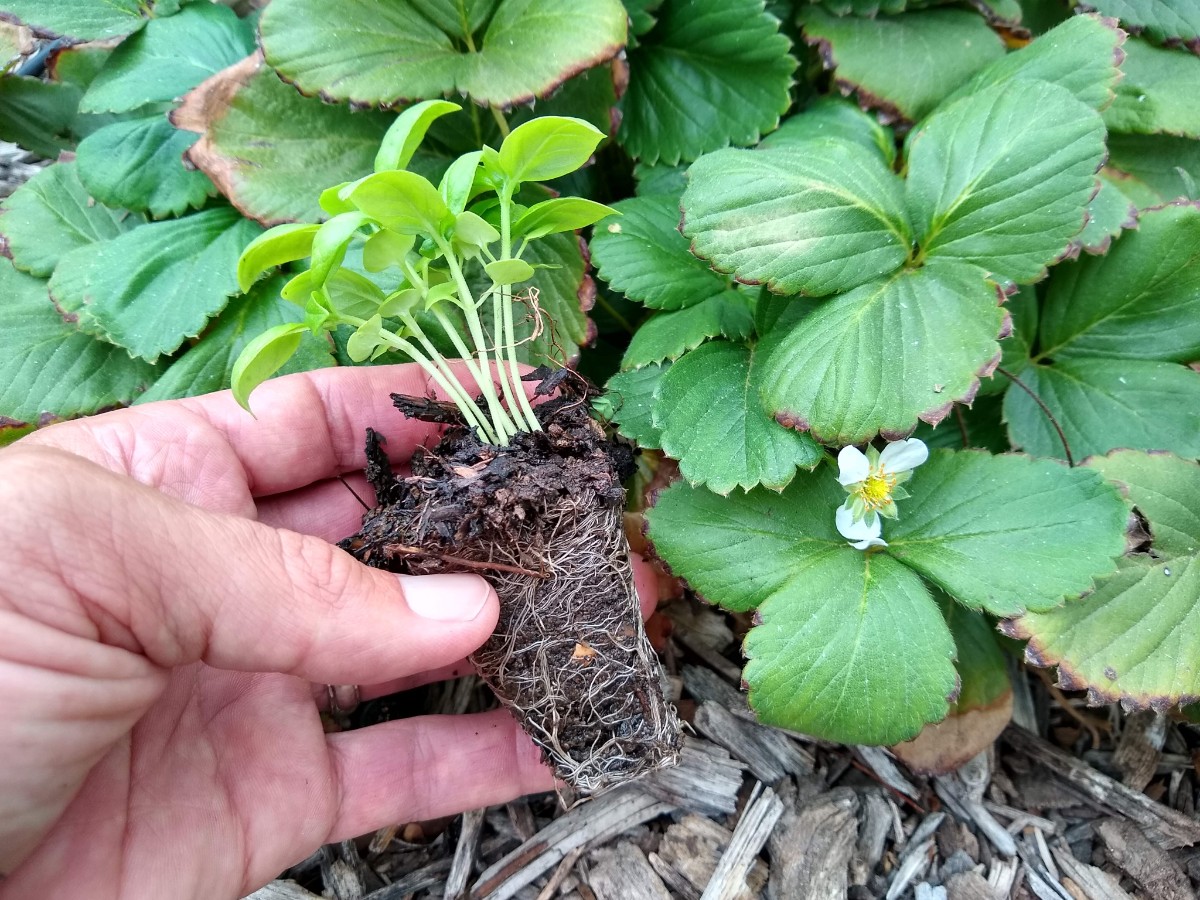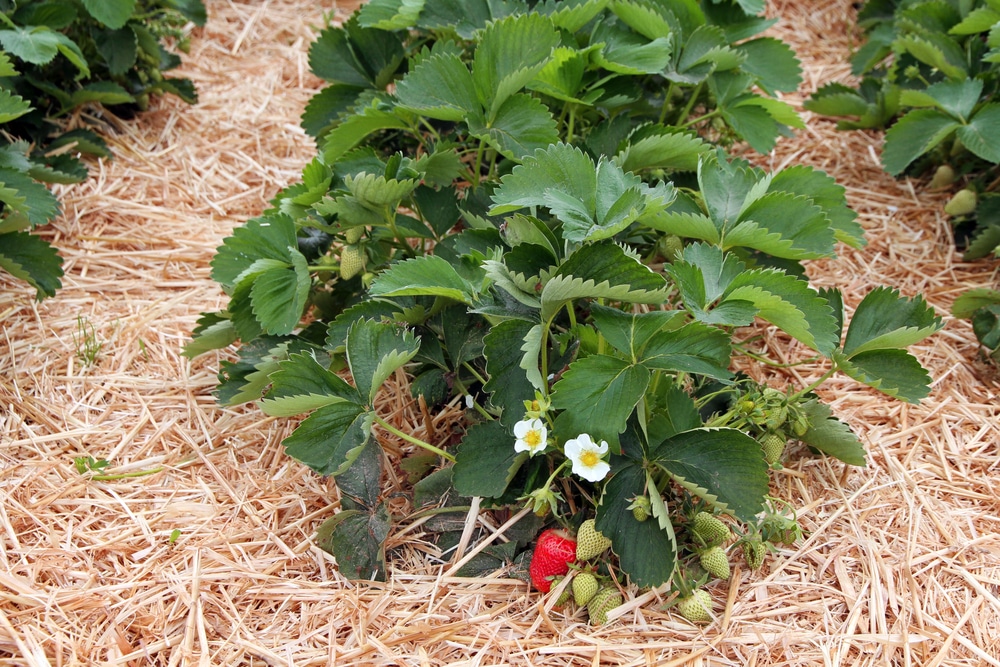Understanding the Slug Threat: Why Protection is Crucial
Slugs are a significant threat to strawberry plants, causing damage that can result in reduced yields and lower fruit quality. These slimy pests feed on the leaves, flowers, and fruit of strawberry plants, leaving behind holes and tears that can be devastating to the plant’s health. In addition to the physical damage, slugs can also spread disease and attract other pests, further compromising the plant’s well-being.
The importance of protecting strawberry plants from slugs cannot be overstated. Without proper protection, slug infestations can quickly spiral out of control, leading to significant losses for gardeners and farmers. By understanding the slug threat and taking proactive steps to protect strawberry plants, growers can ensure a healthy and productive harvest.
So, how to protect strawberries from slugs? It starts with understanding the slug’s behavior and habitat. Slugs are nocturnal, preferring to feed at night, and thrive in moist, humid environments. They are attracted to the sweet, juicy flesh of strawberry fruit and can quickly become a nuisance if left unchecked.
To effectively protect strawberry plants from slugs, growers must employ a combination of physical barriers, organic deterrents, and cultural controls. This may include using copper tape or mesh to create a physical barrier around the plants, or employing organic deterrents like beer traps or eggshells to repel slugs. Additionally, maintaining a healthy and balanced strawberry patch through proper watering, fertilization, and pruning techniques can help prevent slug infestations.
By taking a proactive and comprehensive approach to protecting strawberry plants from slugs, growers can enjoy a bountiful and healthy harvest. Whether you’re a seasoned gardener or just starting out, understanding the slug threat and taking steps to protect your strawberry plants is crucial for success.
Physical Barriers: Copper, Mesh, and Other Deterrents
Physical barriers are a highly effective way to protect strawberry plants from slugs. One of the most popular methods is to use copper tape or mesh around the plants. Copper is toxic to slugs and will deter them from crossing the barrier. To use copper tape, simply wrap it around the plant pot or bed, making sure to cover the entire area. For mesh, cut a piece to fit around the plant and secure it with stakes or weights.
Another option is to use a physical barrier made of a material that is unappealing to slugs, such as crushed eggshells or sharp gravel. These materials can be placed around the plants to deter slugs from approaching. It’s essential to ensure that the barrier is at least 6-8 inches high to prevent slugs from climbing over.
When using physical barriers, it’s crucial to ensure that they are installed correctly to prevent slugs from finding ways to bypass them. For example, if using copper tape, make sure to wrap it tightly around the plant pot or bed, and ensure that there are no gaps or holes that slugs can exploit.
In addition to copper tape and mesh, other materials can be used as physical barriers, such as plastic or metal edging. These materials can be placed around the plants to create a slug-proof barrier. However, it’s essential to ensure that the material is durable and can withstand the elements.
By using physical barriers, gardeners can effectively protect their strawberry plants from slugs and enjoy a bountiful harvest. When combined with other methods, such as organic deterrents and companion planting, physical barriers can be a highly effective way to keep slugs at bay.
Organic Deterrents: Beer Traps, Eggshells, and More
Organic deterrents are a popular method for protecting strawberry plants from slugs. One of the most effective methods is to use beer traps. Slugs are attracted to the yeast and fermentation process of beer, and will crawl into the trap to feed on it. To create a beer trap, simply bury a container filled with beer near the affected plants. The slugs will crawl in and drown, providing a safe and effective way to control slug populations.
Another organic deterrent is to use crushed eggshells around the plants. Slugs do not like to crawl over sharp surfaces, and the eggshells will deter them from approaching the plants. Simply sprinkle the crushed eggshells around the plants, making sure to cover the entire area.
Other organic deterrents include using garlic, hot pepper spray, and coffee grounds. Garlic has natural insecticidal properties that will repel slugs, while hot pepper spray will deter them with its spicy flavor. Coffee grounds, on the other hand, will dehydrate the slugs and make it difficult for them to move.
When using organic deterrents, it’s essential to remember that they may not be as effective as other methods, such as physical barriers or traps. However, they can be a useful addition to a comprehensive slug control strategy. By combining multiple methods, gardeners can create a powerful defense against slugs and protect their strawberry plants.
It’s also important to note that organic deterrents can be used in conjunction with other methods, such as companion planting and cultural controls. By creating a balanced and healthy strawberry patch, gardeners can reduce the risk of slug infestations and enjoy a bountiful harvest.
Companion Planting: Slug-Repellent Plants to Pair with Strawberries
Companion planting is a simple and effective way to protect strawberry plants from slugs. By pairing strawberries with certain plants that repel slugs, gardeners can create a natural defense against these pests. One of the most effective companion plants for strawberries is garlic. Garlic has natural insecticidal properties that will repel slugs and other pests, making it an excellent choice for companion planting.
Another effective companion plant for strawberries is chives. Chives have a strong onion-like scent that will repel slugs and other pests. They are also easy to grow and require minimal maintenance, making them a great choice for gardeners of all skill levels.
Mint is another popular companion plant for strawberries. Mint has a strong, pungent scent that will repel slugs and other pests. It is also easy to grow and can be used in a variety of dishes, making it a great addition to any garden.
Other companion plants that can be used to repel slugs include radish, daffodil, and hyacinth. These plants all have natural properties that will repel slugs and other pests, making them excellent choices for companion planting.
When using companion planting to protect strawberries from slugs, it’s essential to remember that this method may not be as effective as other methods, such as physical barriers or traps. However, it can be a useful addition to a comprehensive slug control strategy. By combining multiple methods, gardeners can create a powerful defense against slugs and protect their strawberry plants.
It’s also important to note that companion planting can have other benefits for strawberry plants, such as improving soil health and attracting beneficial insects. By incorporating companion planting into their gardening routine, gardeners can create a healthy and balanced ecosystem that will support the growth of their strawberry plants.
Traps and Baits: Effective Methods for Slug Control
Traps and baits are another effective way to control slug populations and protect strawberry plants. There are several types of traps and baits available, including commercial products and DIY methods.
One popular type of trap is the pitfall trap. This type of trap uses a container filled with a liquid bait, such as beer or yeast, to attract and trap slugs. The slugs fall into the container and cannot climb out, making it an effective way to control slug populations.
Another type of trap is the sticky trap. This type of trap uses a sticky surface to trap slugs, which are then removed and disposed of. Sticky traps can be purchased commercially or made at home using a sticky substance, such as honey or corn syrup, and a piece of cardboard or plastic.
Baits are also an effective way to control slug populations. Baits can be made from a variety of ingredients, including metaldehyde, a toxic substance that is poisonous to slugs. Baits can be placed near the affected plants, and the slugs will be attracted to the bait and eat it, resulting in their death.
When using traps and baits, it’s essential to follow the manufacturer’s instructions and take necessary precautions to avoid harming other animals or pets. It’s also important to note that traps and baits may not be as effective as other methods, such as physical barriers or companion planting, and may need to be used in combination with other methods to achieve optimal results.
Some popular DIY traps and baits include using a plastic container filled with beer or yeast, or creating a homemade bait using a mixture of flour, sugar, and metaldehyde. These methods can be effective and cost-efficient, but may require more time and effort to set up and maintain.
Overall, traps and baits can be a useful addition to a comprehensive slug control strategy. By combining multiple methods, gardeners can create a powerful defense against slugs and protect their strawberry plants.
Cultivating a Slug-Resistant Strawberry Patch
Cultivating a healthy and balanced strawberry patch is crucial to preventing slug infestations. By maintaining a well-watered, fertilized, and pruned strawberry patch, gardeners can reduce the risk of slug infestations and promote healthy plant growth.
Proper watering is essential to maintaining a healthy strawberry patch. Overwatering can lead to an increase in slug populations, as slugs thrive in moist environments. On the other hand, underwatering can stress the plants, making them more susceptible to slug damage. Gardeners should aim to provide their strawberry plants with about 1-2 inches of water per week, either through rainfall or irrigation.
Fertilization is also important for maintaining a healthy strawberry patch. A balanced fertilizer that is high in phosphorus and potassium can promote healthy plant growth and reduce the risk of slug infestations. Gardeners should avoid overfertilizing, as this can lead to an increase in slug populations.
Pruning is another important aspect of maintaining a healthy strawberry patch. Pruning helps to promote healthy plant growth, increase fruit production, and reduce the risk of slug infestations. Gardeners should prune their strawberry plants regularly, removing any dead or diseased leaves or flowers.
By maintaining a healthy and balanced strawberry patch, gardeners can reduce the risk of slug infestations and promote healthy plant growth. This, combined with other methods such as physical barriers, organic deterrents, and traps, can help to create a comprehensive slug control strategy.
It’s also important to note that a healthy strawberry patch is more resilient to slug damage. By promoting healthy plant growth, gardeners can reduce the risk of slug infestations and ensure a bountiful harvest.
Monitoring and Maintenance: Keeping Slugs at Bay
Regular monitoring and maintenance are crucial to preventing slug infestations and protecting strawberry plants. By regularly inspecting plants, removing weeds, and maintaining a clean and slug-free environment, gardeners can reduce the risk of slug damage and ensure a bountiful harvest.
Inspecting plants regularly is essential to detecting slug damage early on. Gardeners should check their strawberry plants daily, looking for signs of slug damage such as holes in leaves, flowers, and fruit. They should also check for slugs themselves, looking for them in moist, dark areas such as under rocks, logs, and mulch.
Removing weeds is also important to preventing slug infestations. Weeds provide a habitat for slugs, and removing them can help to reduce the risk of slug damage. Gardeners should remove weeds regularly, using a tool such as a hoe or hand weeder.
Maintaining a clean and slug-free environment is also crucial to preventing slug infestations. Gardeners should remove any debris, such as dead leaves and flowers, that may be attracting slugs to the area. They should also avoid using mulch, which can provide a habitat for slugs.
By regularly monitoring and maintaining their strawberry patch, gardeners can reduce the risk of slug damage and ensure a bountiful harvest. This, combined with other methods such as physical barriers, organic deterrents, and traps, can help to create a comprehensive slug control strategy.
It’s also important to note that monitoring and maintenance should be done regularly, ideally daily, to ensure that slugs are not present in the strawberry patch. By being proactive and taking regular action, gardeners can prevent slug infestations and protect their strawberry plants.
Conclusion: A Comprehensive Approach to Protecting Your Strawberry Patch
Protecting strawberry plants from slugs requires a comprehensive approach that incorporates multiple methods. By using physical barriers, organic deterrents, companion planting, traps, and baits, gardeners can create a powerful defense against slugs and ensure a bountiful harvest.
It’s essential to remember that no single method is foolproof, and a combination of methods is often the most effective way to protect strawberry plants from slugs. By understanding the slug threat and taking proactive steps to protect their strawberry patch, gardeners can enjoy a healthy and productive harvest.
In addition to the methods discussed in this article, gardeners should also consider maintaining a healthy and balanced strawberry patch through proper watering, fertilization, and pruning techniques. This will help to reduce the risk of slug infestations and promote healthy plant growth.
By taking a comprehensive approach to protecting their strawberry patch, gardeners can enjoy a bountiful and slug-free harvest. Whether you’re a seasoned gardener or just starting out, the methods discussed in this article can help you to protect your strawberry plants from slugs and ensure a successful harvest.
Remember, protecting strawberry plants from slugs is an ongoing process that requires regular monitoring and maintenance. By staying vigilant and taking proactive steps to protect their strawberry patch, gardeners can enjoy a healthy and productive harvest for years to come.








